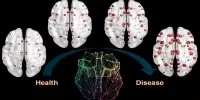Bird flu, often known as avian influenza, is a viral virus that mostly affects birds, both domestic and wild. While most strains of avian flu do not infect humans, if they mutate and obtain the ability to transmit freely among humans, they can pose a substantial threat to human health.
According to a new study from experts in China and Nottingham, a subtype of avian flu virus that is widespread in poultry farms in China is undergoing mutational alterations, which could raise the likelihood of the disease being transmitted to humans.
According to the researchers, the findings raise concerns about a potential epidemic or pandemic in the making, and that further research is needed to closely monitor such viruses in poultry and people.
We demonstrate that an avian H3N8 virus isolated from a patient with severe pneumonia replicated efficiently in human bronchial and lung epithelial cells was extremely harmful in its effects in laboratory mammalian hosts and could be passed on through respiratory droplets.
Professor Kin-Chow Chang
The findings, published in Cell, provide the characterization of a human isolate of the H3N8 avian influenza virus (AIV) from a human patient. Using laboratory mice and ferrets as human infection models, the researchers discovered that the virus had undergone many adaptive alterations, causing severe animal illnesses and making it transmissible via the airborne route between animals.
In humans, the avian H3N8 virus infection has been found to cause acute respiratory distress syndrome and can even be fatal. The virus is widespread in chicken flocks; however previously, the features of how it might be transmitted from animals to humans is poorly understood.

“We demonstrate that an avian H3N8 virus isolated from a patient with severe pneumonia replicated efficiently in human bronchial and lung epithelial cells, was extremely harmful in its effects in laboratory mammalian hosts and could be passed on through respiratory droplets,” says Professor Kin-Chow Chang,at the University of Nottingham.
“We discovered that the virus had acquired human receptor binding preference and the amino acid substitution PB2-E627K, both of which are required for airborne transmission.” Human populations remain immunologically naive to new animal-adapted H3N8 AIVs, even when vaccinated against human H3N2 virus, and could be vulnerable to infection at epidemic or pandemic proportions.”
“Influenza virus acid resistance is also an important barrier for avian influenza virus to overcome in order to acquire adaptability and transmissibility in new mammals or humans.” The current new H3N8 virus has not yet developed acid resistance. As a result, we should keep an eye out for changes in acid resistance of the novel H3N8 virus.”
















